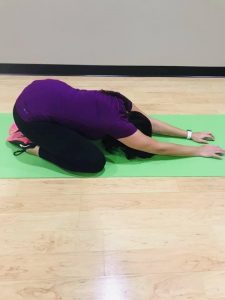It’s the weekend and there may be a date night in your near future with your partner. We know what that could mean: dinner, maybe a movie, and…intimacy. OK, let’s just call it what it is: sex! Physical intimacy can be an important way to show love and to strengthen a relationship. But for those who suffer from pelvic pain, intimacy may be scary, cause anxiety, and lead to distance between partners.
Nobody wants to do things that are painful. When we know an activity hurts, what do we do? Avoid it! Why would anyone want to do something that hurts? However, when it comes to sex, this can be detrimental to our relationship. Our partner may feel hurt, rejected, and may have a hard time understanding. This can cause a strain in any relationship.
If you suffer from pelvic pain, specifically pain with sex (also known as dyspareunia), know you are not alone. Up to 20% of women may experience dyspareunia at some point. What many women don’t know is that the muscles in your pelvis may be the cause of pain.
We all have muscles deep in our pelvis called the pelvic floor. These muscles sit like a hammock at the base of the pelvis. Their functions include providing support to the pelvic organs, assisting in bladder control, and…SEX!! The pelvic floor muscles help provide arousal with increased blood flow to the pelvis, provide vaginal sensation and tone, and they contract strongly and rhythmically during orgasm.
Sometimes, the pelvic floor muscles can become tense and tight. What happens when muscles tighten up? They become painful! And guess what? The pelvic floor muscles can become dysfunctional just like any other muscle in your body. If the muscles in your lower back become tight what happens? Your back hurts. So, what if the muscles in your pelvis become tight? You have pelvic pain! During sexual activity, the pelvic floor muscles have direct pressure placed on them which can cause pain.
The other thing that our body does when we anticipate pain is to tense our muscles. We try to guard and pull away. This is a natural response to keep us alive, at least in the cave-man days. However, it can be problematic. Someone who experiences painful intercourse tenses their pelvic floor muscles in anticipation to the pain. Because these muscles surround the vagina, their increased muscle guarding makes sex painful – if not impossible.
The good thing is there is help! There are different stretches and strategies you can use at home to decrease pain with sex by teaching your pelvic floor muscles how to relax.
- Use visualizations or self-meditation such as “imagining your vagina or pelvis opening up”, and “let your pelvic muscles go” can be used at home. A relaxed pelvic floor means less pain!
- Manual therapy (hands-on) treatments to release tight pelvic muscles can also be very beneficial. Imagine having a “knot” in the muscles of your shoulder. If you press and hold on this spot it will “let go” and be less painful. These same types of techniques can be used on the pelvic floor muscles to decrease tension.
- There are “in the moment” strategies you can use to decrease pain with intimacy. Using lubrication is important to decrease tissue friction. I recommend water-based lubrication as they won’t get “gummy”. Trying to be in a relaxed state can also help. A hot bath prior to intimacy can help relax your muscles. You can also stretch prior to sexual activity to reduce pelvic muscle tightness, as well as after to decrease post-intimacy soreness. (Not super romantic, but as your muscles relax more and more, you won’t need to do this as much and can stay more in the moment).
- There are multiple stretches you can do at home to help decrease pain and muscle tension. We want to stretch the pelvic floor muscles, along with the hips, lower back, and inner thigh muscles. These muscles all attach to similar spots as your pelvic floor, so stretching these will help decrease the tension to your pelvic muscles. Stretches include the “butterfly” stretch for the inner-thighs and pelvic floor, and “child’s pose” for hips and lower back. Each stretch should be held for one minute, and done 2-3 times per day.


Listen moms, SEX SHOULDN’T HURT! But rest assured, it is a pretty common problem and if you experience pain with intimacy you are not alone. Know there are things you can do to decrease or eliminate pain with intercourse to allow you to enjoy a fun and pain-free sex life!
















